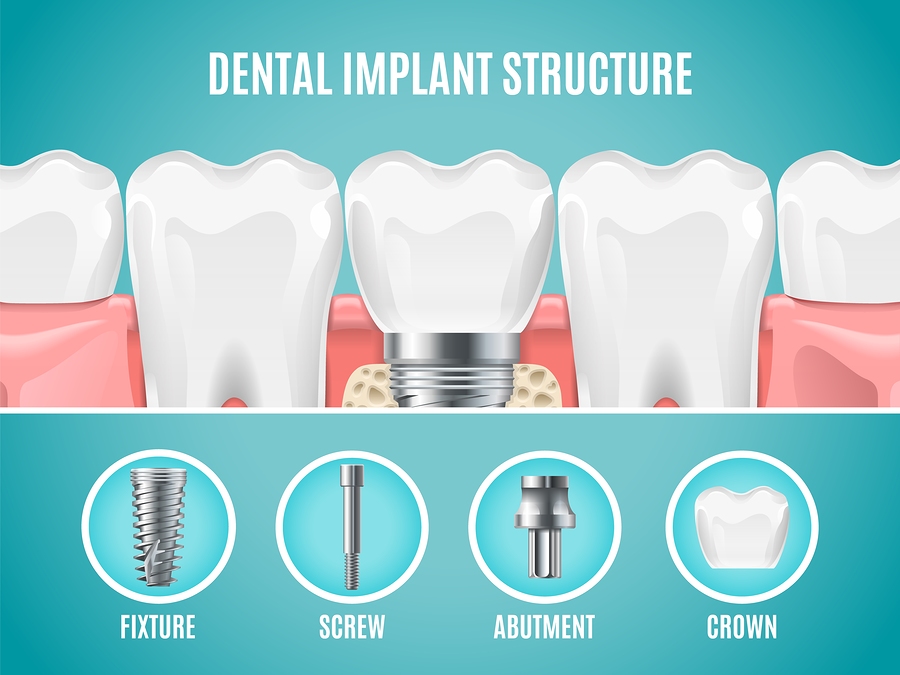The Only Guide for Dental Sense
The Only Guide for Dental Sense
Blog Article
The Greatest Guide To Dental Sense
Table of ContentsDental Sense Can Be Fun For Everyone8 Easy Facts About Dental Sense ShownThe Basic Principles Of Dental Sense The Definitive Guide to Dental Sense
are clinical gadgets operatively implanted into the jaw to bring back a person's capability to chew or their appearance. They provide support for man-made (phony) teeth, such as crowns, bridges, or dentures. When a tooth is lost due to injury or disease, an individual can experience issues such as fast bone loss, defective speech, or changes to eating patterns that cause pain.Dental implant systems contain a dental implant body and dental implant joint and might additionally include a joint fixation screw. Dental implant vs bridge. The dental implant body is operatively inserted in the jawbone instead of the tooth's origin. The oral implant joint is typically connected to the dental implant body by the joint addiction screw and prolongs via gum tissues right into the mouth to support the attached man-made teeth
(https://www.tripadvisor.in/Profile/dentalsense1)Framework of The Oral Implant System selecting dental implants, talk with your oral service provider regarding the prospective advantages and risks, and whether you are a candidate for the procedure. Things to think about: Your general health and wellness is a crucial element in establishing whether you are a good prospect for oral implants, how much time it will take to recover, and how long the dental implant may remain in location.
Smoking cigarettes might impact the healing process and decrease the lasting success of the implant. The healing process for the implant body might take a number of months or longer, during which time you normally have a temporary joint instead of the tooth. the dental implant treatment: Carefully adhere to the dental hygiene guidelines offered to you by your oral provider.
The 7-Minute Rule for Dental Sense
Implant failing can result in the demand for an additional operation to deal with or replace the dental implant system. Brings back the capacity to chew Recovers aesthetic appearance Helps keep the jawbone from diminishing because of bone loss Maintains the wellness of the surrounding bone and periodontals Aids maintain adjacent (close-by) teeth steady Improves lifestyle Damages to bordering all-natural teeth during implant positioning Injury to the surrounding cells during surgery, such as sinus opening Injury throughout surgical procedure (as an example, crack of surrounding jawbone) Poor feature, such as seeming like the teeth do not attack together usually A sensation that the tooth hangs or twisting in position resulting from a joint screw loosening up Implant body failing (looseness of the dental implant body) because of systemic infection, which may be more most likely in patients with uncontrolled diabetics issues because of regional infection in bone and gums supporting the dental implant body because of postponed healing, which may be most likely in individuals who smoke Difficulty cleansing the gums around the dental implant, causing bad dental health Without treatment gum disease Post-surgical pins and needles because of nerve impingement or damages Constantly inform health treatment carriers and imaging service technicians that you have dental implants before any magnetic resonance imaging (MRI) or x-ray treatments.
FDA is not aware of any kind of visit this website negative events reported for MRI or x-ray procedures with dental implants. Dental implants systems are generally constructed from materials that adhere to worldwide consensus requirements of the International Company for Standardization (ISO) or ASTM International. These standards have details of what makes a secure product.

An oral implant is a structure that replaces a missing out on tooth. With screw-like devices, the specialist inserts an implant into the jawbone, and it works as a support for a fabricated tooth, called a crown. A gadget called an abutment attaches the man-made tooth to the oral implant. The crown is customized to fit the person's mouth and match the shade of their teeth.
Some Of Dental Sense
Some people are not eligible for dental implant surgical procedure. It is for dental cosmetic surgeons to run on people with: acute illnessuncontrollable metabolic diseasebone or soft cells disease or infectionIf these problems are dealt with, a person can have the surgical treatment. In, oral doctors avoid from operating people with: If people with any one of the above undergo oral implant surgical treatment, there is a higher threat of the implant failing.

Oral implant surgical treatment is an individualized procedure. It's not the same for every person. The complying with provides a general introduction of what you can anticipate your dental expert, dental surgeon, periodontist or prosthodontist to do: Put the dental implant surgically. Provide you time to heal. Attach the article and last crown, bridge or denture.
Next off, your cosmetic surgeon will carefully place the dental implant into your jaw. If your dental implant is near the front of your mouth, your dental expert will make a temporary tooth for you to wear until you heal.
Dental Sense - An Overview
Your company can inform you what to expect in your circumstance. Throughout the healing stage, your jawbone should fuse to the dental implant. This procedure, called osseointegration, is critical for stability and lasting success. This procedure can take anywhere from three to 9 months. In some instances, it may take longer.
As soon as your dental implant heals, your dental practitioner can connect the abutment (small port article) and your final repair (crown, bridge or denture). This generally takes concerning one hour to finish and might require a second small surgery. You should not really feel any type of discomfort during your dental implant procedure due to the fact that your company will make use of drug to numb your gum tissues.
Report this page